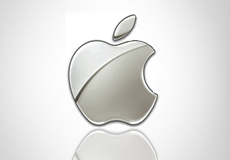By
Dennis KubaOctober 6, 2011
You may have noticed that Apple.com’s homepage simply features a thoughtful image of pioneer and innovator Steve Jobs today. As the industry (and world) mourns the loss of a true original, we thought we’d provide you with some early comments to Steve’s untimely passing. The links below will take you to more detailed statements from those who have provided their thoughts.
- “He changed the way each of us sees the world.” — President Obama
- “The world rarely sees someone who has had the profound impact Steve has had, the effects of which will be felt for many generations to come. For those of us lucky enough to get to work with him, it’s been an insanely great honor. I will miss Steve immensely.” — Bill Gates
- “His focus on the user experience above all else has always been an inspiration to me. He was very kind to reach out to me as I became CEO of Google and spend time offering his advice and knowledge even though he was not at all well.” — Larry Page
- “Steve, thank you for being a mentor and a friend. Thanks for showing that what you build can change the world. I will miss you.” — Mark Zuckerberg
- “He was a historical figure on the scale of a Thomas Edison or Henry Ford, and set the mold for many other corporate leaders in many other industries.” — Walt Mossberg
- “Everything good I have done, I have done on a Mac.” — John Hodgman (PC in the Mac commercials) via Twitter
- “People sometimes have goals in life. Steve Jobs exceeded every goal he ever set for himself.” — Steve Wozniak
- “Steve was a teacher to anyone paying attention, and today is a very sad day for everyone who cares about innovation and high standards.” — Jeff Bezos
- “Steve’s work made the world a better place for hundreds of millions of people.” — Marc Andreessen
- “The magic of Steve was that while others simply accepted the status quo, he saw the true potential in everything he touched and never compromised on that vision.” — George Lucas
- “Steve Jobs was an extraordinary visionary, our very dear friend and the guiding light of the Pixar family. He saw the potential of what Pixar could be before the rest of us, and beyond what anyone ever imagined. Steve took a chance on us and believed in our crazy dream of making computer animated films; the one thing he always said was to simply ‘make it great.’ He is why Pixar turned out the way we did and his strength, integrity and love of life has made us all better people. He will forever be a part of Pixar’s DNA. Our hearts go out to his wife Laurene and their children during this incredibly difficult time.” — John Lasseter and Ed Catmull
- “Steve Jobs was simply the greatest CEO of his generation.” — Rupert Murdoch

